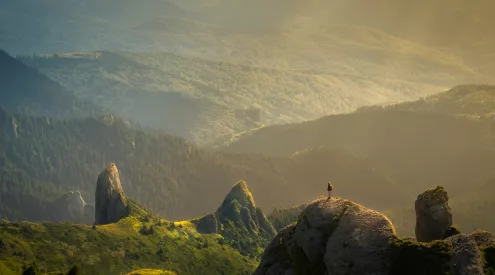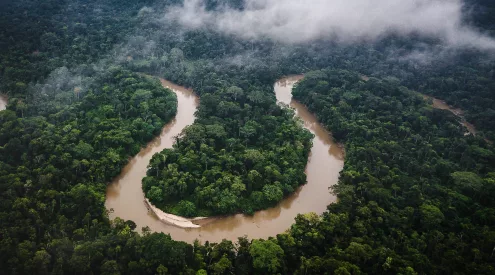Picture a small pond on a windless day. Now imagine tossing a pebble into the centre of the calm, glassy water and you’ll notice small ripples move out in all directions from the point of impact. The ripples continue travelling away from one another until they encounter land, where they break and dissipate.
Sea waves are formed in much the same way, only on a far larger scale: the ocean is the pond and a wind-generating storm is the pebble. When wind blows over the ocean’s surface, it pushes water in the same direction and transfers its energy to the water. Small ripples form and a wave is born.
At this stage, if the wind dies down, so will the waves; if it persists, ripples will merge together and gather momentum. The longer, harder and further the wind blows, the bigger and faster the ripples become until, finally, regular patterns of smooth, rounded waves are formed. These are called open ocean swells and no longer require wind to drive them.
Interestingly, the water is moving only a small amount; it’s the wave’s energy that’s moving, using the water as its medium. This is why surfers rise and fall in a vertical motion with the water. As swells move toward the shore and the depth decreases, their speed slows and wave sets are forced closer together. These grow in height and steepness and there comes a point where the top of the wave overtakes the bottom, and starts to spill forward and break.
How it breaks depends on the slope of the shoreline; a steep bottom causes dumping waves, while a gradual slope produces spilling or crumbling waves. The shape of headlands and sandbanks also plays a part and often creates waves that ‘peel’, allowing surfers to ride the face.
When the weatherman next points to a large storm brewing far out to sea, you can be guaranteed that surfers will be on the watch, waiting for the big waves to roll in.
Tsunami vs tidal wave
Although they’re both sea waves, they aren’t the same. A tidal wave is a shallow wave of water caused by gravitational interactions between the sun, moon and Earth. A tsunami is a gigantic wave caused by an underwater earthquake or landslide displacing the ocean water. Tsunamis hitting the coastline can be catastrophic.


















